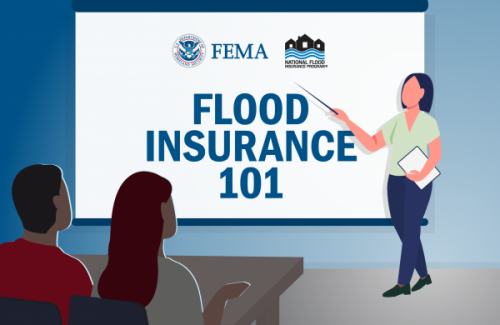Unusually high ocean temperatures were responsible for an incredibly stormy year throughout 2024. Around the world and across the nation, those storms led to flooding in a way that’s brought international focus on flooding. That’s why, in 2025, you will find new and expanded resources for insurance agents that ensure you’re well equipped to address evolving flood insurance needs and bring clarity to clients’ confusion about flood insurance.
Explaining Flood Insurance Rates
Following any major storm, you may receive calls from current and prospective clients with questions about flood insurance. The easiest thing you can do is help them get a quote–but do you know what to say when they ask what determines their rates? By providing a clear understanding of the factors considered in setting rates, you assure your clients that you are the subject matter resource for them. Those factors that influence your clients rates are as follows.
Where the Building Is Located
- The building’s location is the first-rate factor that’s considered. Buildings that are closer to bodies of water like rivers, lakes and estuaries have higher flood risk, and thus higher rates. Other factors are associated with this, such as the property’s ground elevation, and whether the building is eligible for a CRS (Community Rating System) discount.
How the Building Is Built
- Some building construction factors that affect rates are clear. Whether utilities are elevated above ground level or located in a basement is another rating factor. A condominium unit or apartment on the ground level is at higher risk for personal property damage than one on a higher floor.
The Value of the Property Insured
- Insuring a building for $250,000 will require a higher rate than $150,000 of coverage for a property with comparable risk in the same location. Similarly, insuring $100,000 worth of personal property will cost more than insuring $50,0000 of personal property, with the same risk factors.
What Is Covered
- The final factor in pricing a flood insurance policy is the type of coverage is needed. The NFIP offers two policy types, one that insures the building and the other that insures its contents. Helping your clients identify what coverage they need; can ensure they have financial protection in the event of a flood.
With the right knowledge and our resources, you can confidently guide your clients to meet their insurance needs. Find rating information and more by exploring the NFIP’s resource library.

